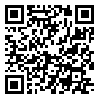Thu, Apr 18, 2024
[Archive]
Volume 11, Issue 4 (12-2019)
2019, 11(4): 29-39 |
Back to browse issues page
Download citation:
BibTeX | RIS | EndNote | Medlars | ProCite | Reference Manager | RefWorks
Send citation to:



BibTeX | RIS | EndNote | Medlars | ProCite | Reference Manager | RefWorks
Send citation to:
A Model for Selecting the Best Organizational Paradigm at Run Time for Self-Organizing Multi-Agent Systems; an IoT Case Study. International Journal of Information and Communication Technology Research 2019; 11 (4) :29-39
URL: http://ijict.itrc.ac.ir/article-1-445-en.html
URL: http://ijict.itrc.ac.ir/article-1-445-en.html
Abstract: (883 Views)
Nowadays, using Multi-Agent Systems (MASs) as a way of controlling complex and large-scale systems is becoming very popular. Also, since the scale of the systems is growing up and their environmental changes are becoming very fast and complicated, the experts are trying to enable these systems to control themselves, instead of having them controlled by humans. One way to devolve this responsibility to the systems is to use self-organization in MASs. To have a self-organizing MAS, agents should be able to shape up an organization. There are different organizational paradigms to be used in self-organizing MASs. Normally, the selection of organizational paradigm is done on design time by the designer of the system. But, in a rapidly changing and complicated environment, the selected paradigm might no longer be suitable for the system. In such a situation, there should be another way for the system to select a new suitable organizational paradigm at runtime. There are some works that provide a comparison among different organizational paradigms based on the performance of the MAS that uses that paradigm. But the comparison is done after the system is designed to have the paradigm. These works do not provide a mechanism for the system to select its paradigm at runtime. In this paper we propose an organization model for self-organizing MASs that provides these systems with the ability to change their organizational paradigm at run time. This organization model considers an amount of utility as the criterion based on which the currently used paradigm can be changed by the system itself. We simulate and evaluate our model in an IoT scenario. The scenario includes a Smart Home and its application of Comfort of Residences. The results show that changing the organizational paradigm and not sticking to the selected one on design time, gives us a 28% improvement on the utility.
Keywords: Multi-Agent Systems, Self-Adaptive Systems, Self-Organizing Systems, Organizational Paradigm, Internet of Things, Smart Home
Type of Study: Research |
Subject:
Communication Technology
| Rights and permissions | |
 | This work is licensed under a Creative Commons Attribution-NonCommercial 4.0 International License. |


